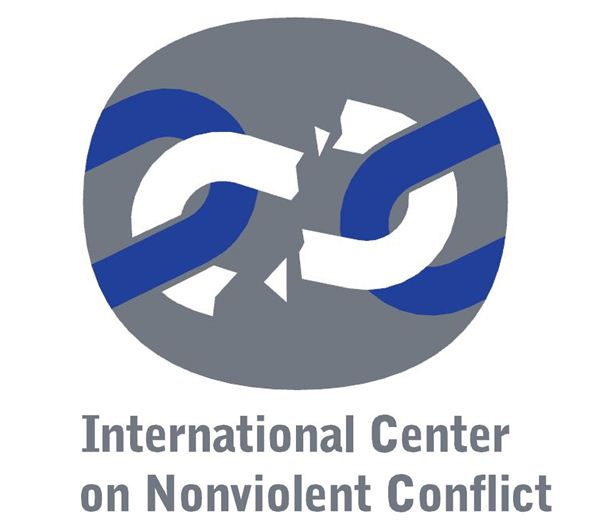D.5.b. Arms Control Developments and New Strategic and Political Threats
Compilation of historic documents recording the negotiations during the 1960s published by the Royal United Services Institute on the occasion of the 50th anniversary of the Nuclear Non-Proliferation Treaty (NPT). The documents can be found in pdf at the link provided.
On 23 January, the Bulletin of the Atomic Scientists moved its Doomsday Clock (created in 1947) from two minutes to midnight to 100 seconds to midnight, which is the closest that it has ever been to the prospect of human destruction. This article makes the case for Britain unilaterally dismantling its nuclear weapons programme; firstly, from a legal perspective, and secondly, from a practical perspective.
This publication focuses on the role of the Japanese hibakusha’s (atomic bomb survivors) experience in advocating for a Treaty that could ban nuclear weapons. It also discusses the impact of nuclear weapons on the environment as well as the human body, and offers arguments that delegitimise nuclear violence.
At a time when international law and the law of war are particularly important and warlike rhetoric is creating new fears and heightening current tensions Falk’s message is particularly relevant. In this collection of essays, Falk examines the global threats to all humanity posed by nuclear weapons. He rejects the adequacy of arms control measures as a managerial stopgap to these threats and seeks no less than to move the world back from the nuclear precipice and towards denuclearization.
Critically assesses the qualities that a nuclear disarmament movement needs to develop in the current era. By comparing Black Lives Matter, ICAN and the Nuclear Freeze movement of the 1980s, Baker explains why a new anti-nuclear weapons movement should be intersectional, digital and confrontational.
New Zealand has built a strong, bipartisan record over several decades for constructive disarmament and arms control policies, which promotes its reputation as a relatively independent, principled international actor. New Zealand’s role as a champion of a rules-based international order, and as a defender of the rights and interests of small states, is also underpinned by its record.
The article discusses how some of the expectations and hopes about the Treaty on the Prohibition of Nuclear Weapons signed by many non-nuclear weapons states in 2017 at the UN have been fulfilled, what else needs to be done to implement further economic divestment, and alter to the nuclear weapons discourse and policies.
Discusses how the ‘humanitarian’ approach to disarmament served as a catalyst to and model for the negotiations on the Treaty on the Prohibition of Nuclear Weapons, and describes its purpose and provisions.
The ‘humanitarian initiative’ in nonproliferation diplomacy leading to the Nuclear Weapons Ban Treaty — has its origins in a reference in the Final Document of the 2010 Nuclear Non-Proliferation Treaty Review Conference to the deep concern about the catastrophic humanitarian consequences of any use of nuclear weapons. However, Nielsen notes that the international and civil society diplomacy that led to the success of the Ban Treaty have not yet changed the national policies of nuclear weapons states. It remains an open question if any of these states will ever support the Ban Treaty.
Given that no significant progress has been made in nuclear disarmament for two decades, the author explores an alternative approach to arms control, focusing on the human dimension rather than on States’ security. He also explores the role of civil society in securing other arms control treaties, in particular the positive experiences of the movements against chemical weapons, anti-personnel mines, and cluster munitions, as well as the recent conclusion of the Arms Trade Treaty. He examines whether civil society will be able to replicate the strategies that have been used successfully in the field of anti-personnel mines (Ottawa Convention) and cluster munitions (Oslo Convention) in the nuclear weapons field.
Former Canadian Ambassador for Disarmament, Douglas Roche describes the approaches of diplomats, members of NGOs, and individuals who have been working to ban nuclear weapons. This book contains links to global networks, and social movements that work to ban nuclear weapons.
Advocates of the TPNW know that it will not automatically lead to a world without nuclear weapons. The treaty’s main goal, the authors argue, is to stimulate a societal and political debate inside the nuclear-armed states and their allies, by strengthening the antinuclear norm and by stigmatising nuclear weapons and their possessors. This article assesses to what extent this process of stigmatisation might take place. It concludes by looking at different stigma-management approaches that could be used by the nuclear-armed states and their allies.
Argues that the post-election debate on replacing the UK’s Trident nuclear weapons system is welcome and necessary, but so far has not dealt with the underlying political meaning of the UK being a nuclear weapon state and what it would mean for it to disarm. This article discusses the politics of Trident in relation to the UK’s military character and its imperial history.
On the 40th anniversary of the signing of the Non-Proliferation Treaty, New Left Review launched a discussion on the role and significance of the NPT. The physicist and expert on the treaty, Norman Dombey, initiated the debate with this detailed and well annotated historical and political examination of the origins and evolution of the treaty and the difficulties it had faced. The article concludes with his assessment of the role of the NPT in limiting proliferation and questions about its future.
See also: Watkins, Susan, ‘The Nuclear Non-Protestation Treaty’, New Left Review, no. 54, Nov-Dec. 2008 for a much more critical analysis of the NPT.
Erasto notes that the TPNW explicitly mentions the NPT, and argues that the two treaties are clearly legally compatible, despite claims that the TPNW is in conflict with the NPT. He then assesses in detail political arguments that the TPNW could jeopardise the NPT regime.
In advance of the NPT Review Conference due in April 2020 (since postponed due to Civid-19) Kimball comments on the dangers to the whole system of arms control and the worsening relations between nuclear weapon states. He suggests an action plan for the NPT conference.
See also: Rauf, Tariq, ‘The NPT at 50: Perish or Survive?’, Arms Control Today, March 2020.
https://www.armscontrol.org/act/2020-03/features/npt-50-perish-survive
Discusses the division between the view of the NPT held by nuclear weapon states who adhere to the treaty and the view of 160 non-nuclear weapon states who are parties to the NPT, who seek reduction and eventual elimination of nuclear weapons. He also discusses the 1995 resolution on a Middle Eastern nuclear weapon free zone, which has become a significant source of disagreement.
Detailed analysis by an investigative US reporter of attempts by the George W. Bush Administration and Israel to prove that Iran was developing nuclear weapons. Porter scrutinizes the evidence cited and throws doubt on much of it.
Potter has been involved in negotiations relating to Review Conferences of the Non-Proliferation Treaty (NPT) for many years and was also engaged in the processes leading to the 2017 UN Treaty on the Prohibition of Nuclear Weapons. From this perspective he discusses how one phrase in the statement of the 2010 NPT Review Conference, on the humanitarian impact of nuclear weapons, opened the way to the diplomatic processes leading to the 2017 Treaty. His article also discusses the probable consequences of the 2017 ‘Ban Treaty’ on the NPT Review Conference scheduled for 2020.

 The online version of Vol. 1 of the bibliography was made possible due to the generous support of the
The online version of Vol. 1 of the bibliography was made possible due to the generous support of the  The online version of Vol. 2 of the bibliography was made possible due to the generous support of
The online version of Vol. 2 of the bibliography was made possible due to the generous support of